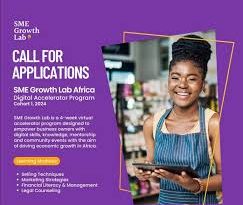3 Ways to Stretch Your Marketing Budget
Marketing and advertising budgets vary widely across organizations. An often-cited statistic from the U.S. Small Business Association suggests spending about 8 percent of gross revenue on marketing if you make under $5 million annually and your net profit parks at 10 to 15 percent. However, a 2016 survey of 168 Chief Marketing Officers found that firms spent a median of 10 percent of their budget on marketing, but some spent as much as 40 percent. For every projection on how much to spend, there’s a company breaking the rules and still achieving success.
A common beginner error is to allocate the majority of your marketing budget to paid media advertising. Rather than going all-in on top-of-funnel visibility, consider putting a portion of budget toward engaging already-aware consumers in order to maximize revenue.
But paid media is just one piece of the equation. A truly integrated marketing strategy incorporates owned media, paid media and earned media, and your advertising dollar will often stretch further when you’ve integrated all three domains.
Here are three ways to blend owned, earned and paid media strategies into an integrated marketing approach, no matter your revenue or budget.
1. Maximize brand equity from the start
In order to make your advertising creative as effective as possible, consider highlighting trustworthy earned-media placements, such as publicity mentions or awards, at the very top of your funnel. A few ways to repurpose past media include:
- Visual authority. If a large media outlet quoted you or your product, show off that placement in your advertising for a bump in trust.
- Television clips. Even in a world of apps and smartphones, TV remains the most-consumed form of media, and guests on segments have implied legitimacy.
- Number of happy customers. Do you have 1,000 five-star reviews on a product? In lieu of publicity, expertise and customer happiness can also function as earned media.
Another valuable piece of real estate that gets easily overlooked is the confirmation email that gets sent when someone joins your newsletter. The open rates on this first fulfillment email are a sky-high 50-90 percent. (if you used an opt-in bribe or sent a free gift, you’re more likely to be in the high end of that range.) Subsequent newsletter campaigns then slide back down to an industry standard 20 percent open rate.
Consider using this first fulfillment email to show off some of your most impressive accolades, whether it be recent podcast interviews you’ve done, your biggest awards or your absolute best content, and ratchet brand equity way up from the start. You may only have a few chances to have your prospect’s undivided attention; make the most credible and authoritative first impression that you can.
2. Invest in content marketing
According to research from Content Marketing Institute, 70 percent of consumers and 80 percent of business decision-makers prefer to get company information in a series of articles versus an advertisement. So consider investing in the creation and production of evergreeen content. Blog posts, videos, infographics, e-books and other content that educates or inspires your prospect can be leveraged over and over again.
Another advantage to content marketing is that you’ll make your prospect or reader more savvy to the problems you solve. And if you’re really good, you’ll convince prospects that the solution to the problem was their idea the whole time, and you just happen to sell it.
A good rule of thumb is if your sales department finds you’re spending a large portion of calls educating a lead on why their problem is actually a problem, you might want to pump up content marketing to educate prospects automatically, freeing up sales calls for selling and conversion. If you’re stuck on what content to create, consider crafting something that answers one of these four questions that your prospect will inevitably have as they consider you:
- “Why should I do anything at all?”
- “Why should I do it this way?”
- “Why should I do it this way with your business?”
- “Why should I do it now?”
If you have a content experience ready in response to each of these questions, you’ll be able to more rapidly move prospects through your funnel.
3. Keep non-buyers engaged with a “crock pot” sequence
Consumers have different buying styles, and no matter how good your marketing campaign is, some prospects will come to like you and trust you but not buy from you just yet. If prospects are floating around in your funnel, but not moving toward a sales conversion, consider moving them to an automated email sequence that drips your best content over a period of weeks or months and takes a break from hard selling.
It’s not unusual for this sequence, known as a “crock pot” because it’s like a slow cooker to warm up your leads, to be several months in length and drip content at a frequency anywhere from one newsletter a month to a few emails a week. Make it a little easier on yourself by repurposing past blogs, videos, or newsletters into this sequence. If you’ve taken the time to write or create, there’s no reason why that content can’t be placed in front of new eyeballs week in and week out.
Not every dollar of advertising has to be allocated to paid placements. Consider beefing up the consumer experience as they’re getting to know you, and you’ll see a valuable lift in the bottom line.
Source: entrepreneur.com




